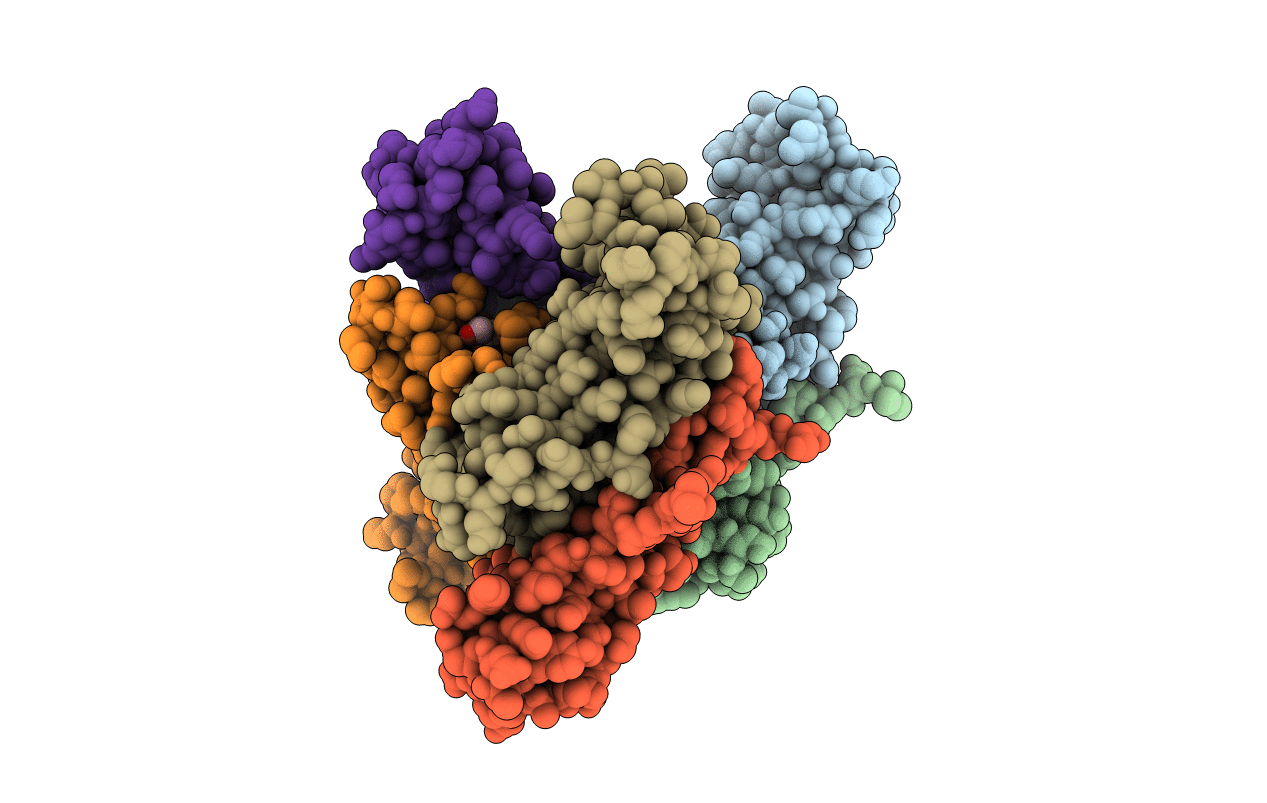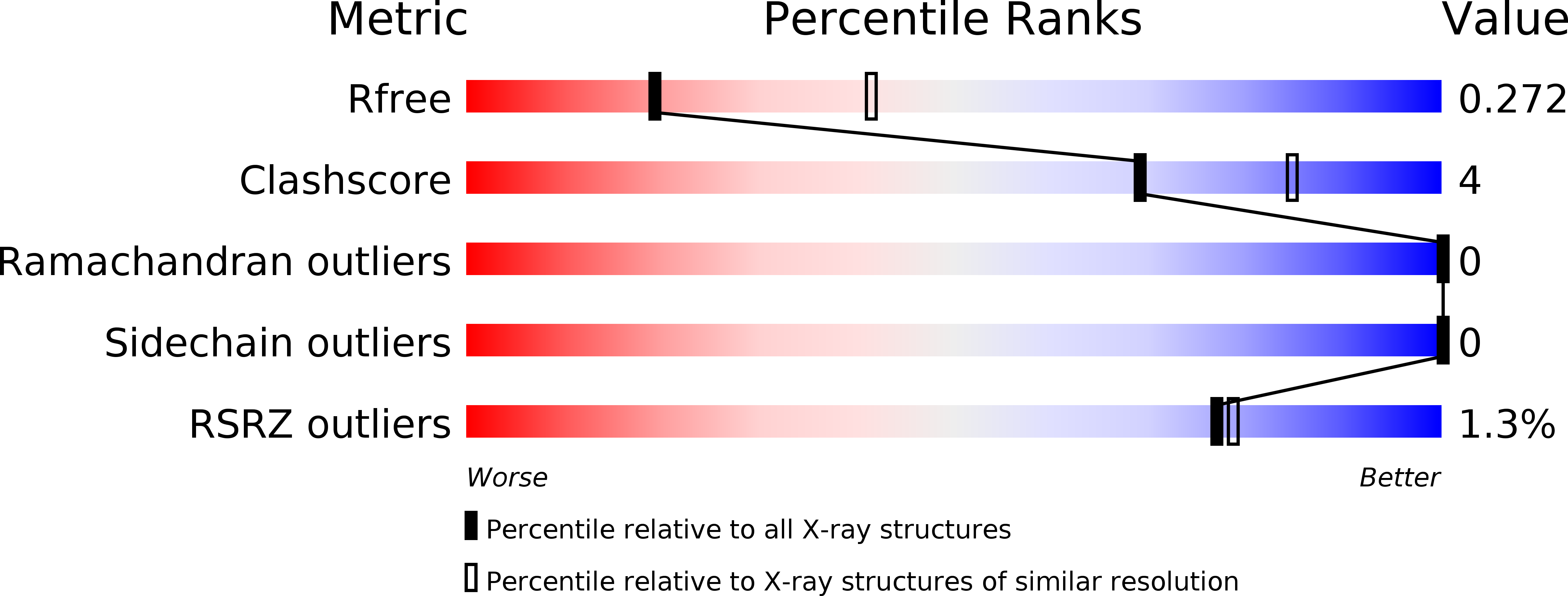
Deposition Date
2019-05-14
Release Date
2020-01-08
Last Version Date
2024-11-13
Entry Detail
PDB ID:
6RPT
Keywords:
Title:
Structure of tick complement inhibitor CirpT1 complexed with macroglobubulin domain 4 of human complement C5
Biological Source:
Source Organism:
Homo sapiens (Taxon ID: 9606)
Rhipicephalus pulchellus (Taxon ID: 72859)
Rhipicephalus pulchellus (Taxon ID: 72859)
Host Organism:
Method Details:
Experimental Method:
Resolution:
2.70 Å
R-Value Free:
0.27
R-Value Work:
0.22
Space Group:
P 1 21 1


